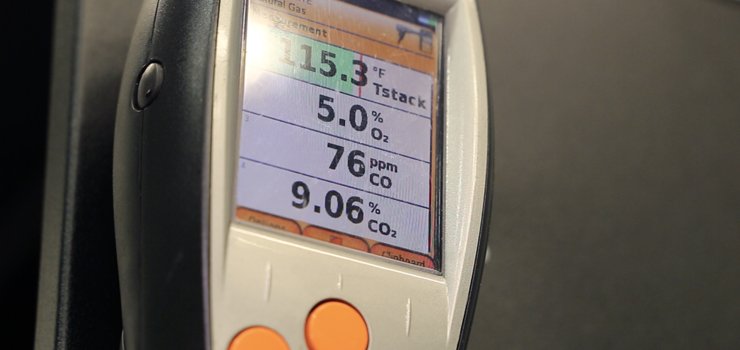 By Ron Beck, Outside Technical Advisor and Manager of Training for U.S. Boiler Company
By Ron Beck, Outside Technical Advisor and Manager of Training for U.S. Boiler Company
It is late in the day, you’re tired, hungry, dirty and looking forward to going home and spending time with the family over a cold beer. Before heading home, you take a few minutes and marvel at the heating masterpiece you have just assembled in your customer’s basement. The boiler is up and running and producing hot water to the building and indirect water heater. Smiling, you think, ‘they sure are going to save a lot of money with this new high efficiency condensing boiler.’
Then, you reflect back to the moment you were bidding for this job and hoping to win it. You knew you could make a huge difference in the homeowner’s fuel bill. Your bid included a U.S. Boiler high efficiency condensing boiler, an indirect water heater, and even a Sage Zone Control to manage the firing rate of the boiler per zone size to add even more energy savings. Happily, you won the bid!
Next, you recall the installation process. Prior to the installation, you completed a heat loss calculation because you know the importance of properly sizing high efficiency boilers. You measured the radiation and calculated the water temperature for proper adjustment of the outdoor reset control. After the installation, you tweaked the Sage2 control to maximize your customer’s fuel savings, even though you knew if you left the control alone it would work right out of the box. You programed the Sage Zone Control’s individual zones based on the heat loss calculation and the BTU’s needed per zone. In fact, you even took time to properly name every zone.
As you snap back to reality, your palms start to sweat and your head starts pounding. You forgot to complete the dreaded COMBUSTION TEST! You hope and pray that your combustion analyzer is charged and that there is paper in the printer.
Then, you calm yourself down. You have done combustion tests before and they are not that hard! As you walk to your work truck to gather the combustion analyzer, manometer, and your toolbox, you remember the U.S. Boiler instructional video on high efficiency boiler combustion testing. When you get back to your customer’s basement, you review the video one more time.
Now you are ready and confident! You grab your small flat head screwdriver and a 2mm Allen wrench. You attach your manometer to the inlet gas port on the gas valve. You verify that the gas pressure does not exceed the maximum pressure reading printed on the boiler label and you methodically perform each step in the combustion test.
Combustion Test:
- Turn the gas valve and boiler on/off electrical switch off.
- Turn the combustion analyzer on and get it ready to use.
- Open the boiler’s I&O Manual and locate the acceptable combustion readings table. The O2/CO2 charts note the number or number range you are looking for during your high and low fire combustion tests.
- Remove the vent cap screw on the vent connector on top of the boiler. If this is an Alpine boiler, you gain access to the vent by removing the vent sensor on the back of the boiler.
- Insert your combustion analyzer probe into the test port until it is about halfway into the vent.
- Turn up all the heating zones to get enough demand that the boiler will stay running the entire time you are performing the combustion test. You may have to temporarily turn off the outdoor reset and domestic hot water priority setting.
- Turn the gas valve and boiler on/off electrical switch back on.
- When the boiler fires, how much does the gas pressure drop? Verify that does not drop more than 2” w.c.
- Next, check the O2 reading at high fire. The boiler may be temporarily locked into high fire as follows:
From the home screen, press “ADJUST” to enter the adjust menu.
Press “ADJUST” again.
Press “LOGIN”.
Press the box containing “000”.
Enter the password “086”.
Press the return arrow to close the keypad.
Press “SAVE”.
Press “ADJUST”.
Press “MANUAL CONTROL”.
Then press “HIGH” to complete the process.
- Verify the gas pressure remains between the high and low gas pressure ratings on the boiler label in high fire.
- Check the O2 reading on the combustion analyzer while the boiler is in high fire. Adjust as follows (if required):
To increase the O2 level, turn the gas valve throttle clockwise.
To reduce the O2 level, turn the gas valve throttle screw counter clockwise.
Make adjustments in increments of 1/8 and 1/4 turns. After one adjustment of the gas valve throttle, allow the combustion to stabilize for at least one minute before rechecking the O2 reading. If the level is still not within the specified range, repeat the adjustment procedure. Final readings should be taken with all doors and covers in place.
- When you have accomplished the proper O2 setting in high fire, go back to the ‘Manual Control’ menu and choose ‘Low.’ Low fire combustion testing will take a bit longer as there is much less air moving through the boiler.
- Check the O2 reading on the combustion analyzer while the boiler is in low fire. Adjust as follows (if required):
To increase the O2 level, turn the offset regulator counter clockwise.
To reduce the O2 level, turn the offset regulator clockwise.
Make adjustments in increments of 1/8 and 1/4 turns. After one adjustment of the offset regulator, allow the combustion to stabilize for at least one minute before rechecking O2 reading. If the level is still not within the specified range, repeat the adjustment procedure. Final readings should be taken with all doors and covers in place.
I suggest turning the offset regulator by 1/8 turn increments as the low fire adjustments are much more sensitive to O2 changes. Also, it is very important to remove the Allen wrench from the offset regulator and wait a few minutes to get the proper low fire O2 reading. Do not keep the Allen wrench pressed against the offset regulator screw.
IMPORTANT: The low fire O2 must be equal to or slightly greater than the high fire O2. For instance, the K2 condensing boiler has a high fire and low fire O2 target of 4.9%. This means that the low fire O2 should be 4.9% or a few tenths higher. I would suggest adjusting the K2 boiler’s low fire O2 to 5.0 – 5.2%.
REMEMBER: Be patient. Very little air is moving through the boiler during low fire. Therefore, the time it takes for the analyzer O2 readings to change after an adjustment will take longer than they do during high fire adjustments.
- Once all testing is completed, return the boiler to automatic modulation by pressing ‘Auto’ on the touchscreen display in the ‘Manual Control’ menu. If the ‘Auto’ fire button is not pressed, the boiler will remain in manual fire for 10 minutes. After that time, the boiler will automatically return to full modulation.
- If you turned the outdoor reset and domestic hot water priority settings off, turn them back on.
- Turn the gas valve and boiler on/off electrical switch off and remove the combustion analyzer. Reinstall the vent cap screw (or vent sensor and vent cap screw on the Alpine boiler). Remove manometer and close the gas port screw.
- Turn the gas valve and the boiler on/off electrical switch on.
Success! You are officially done with the job and you stand there with a feeling of accomplishment. You watch everything working as designed and listen to the boiler purring away as it has now modulated back to 10% of the maximum input. As you climb back into your truck to head home you start thinking about that dreaded combustion test and how simple it really was with the assistance of the instructional video and the directions in the I&O Manual. Again, you smile that your heating masterpiece is operating efficiently and will keeping your customer warm and happy over the holidays… and a long time to come.
Ron Beck is Outside Technical Advisor and Manager of Training for U.S. Boiler Company, where he’s been since 1998. Ron’s 34 years of experience in the heating industry include climbing the ranks of a HVAC company, from apprentice to service manager. Ron can be reached at: RBeck@usboiler.net

